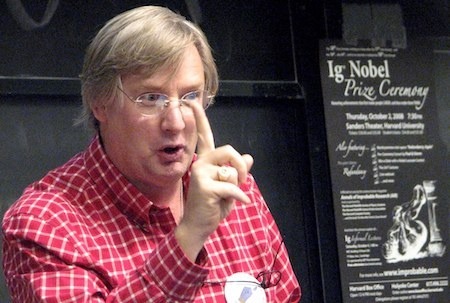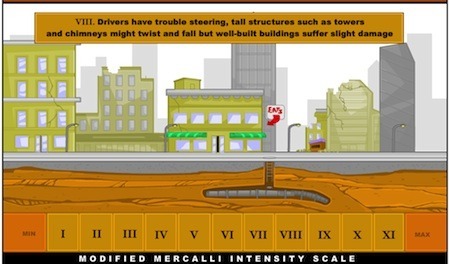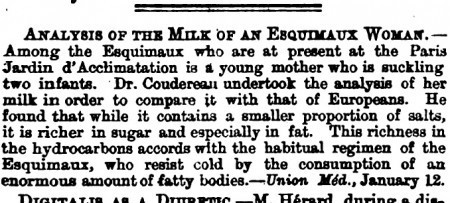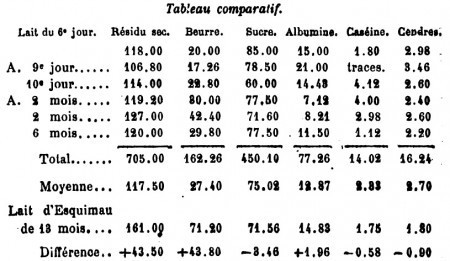Marc Abrahams's Blog, page 427
February 5, 2014
Causation, correlation, and gunshot wounds & blast injuries to the face
The loud insistence that “correlation does not imply causation” may have inspired this study:
“Gunshot wounds and blast injuries to the face are associated with significant morbidity and mortality: Results of an 11-year multi-institutional study of 720 patients,” Steven R. Shackford, et al., Journal of Trauma and Acute Care Surgery, vol. 76, no. 2, February 2014, pp. 347-352. The authors, at a variety of medical institutions in the USA, report:
“There are a number of limitations to this work…. Despite these limitations, we conclude that GSWBIFs [Gunshot Wounds and Blast Injuries to the Face] have high morbidity and mortality…. Further investigation is warranted.”
(Thanks to Bob Finn and John Fleck for bringing this to our attention.)
BONUS (vaguely related, maybe): A strange web site — stevenshackford.md.com — that asks “Are you Dr. Shackford?”

The Plunging Nose Tip: Reality or Illusion? (Aesthetic Surgery Journal)
The plunging nose tip is defined (in the aesthetic surgery world) as a nasal “deformity” where the nasal tip descends or “plunges” during smiling. But is the plunging nose tip a ‘real’ phenomenon? A new paper in the Aesthetic Surgery Journal, (January 2014 vol. 34 no. 1 45-55) describes experimental research which examined the syndrome. The Simon tip rotation angle (STRA) was measured (smiling and non-smiling) in 25 women who had presented themselves for cosmetic primary rhinoplasty and who complained of a plunging tip.
“Our data demonstrate that the nasal tip changes its position less than 1 mm with a full smile. The concept of a ‘plunging tip’ is an optical illusion. In reality, the alar crease and subnasale elevate and the alar rim straightens, while the tip position changes minimally. Objectively, the tip moves less than 1 mm and less than 1 degree using the STRA.”
See: The Plunging Tip : Illusion and Reality (More information from the authors, including the above photo, is available here.)
Also see: The quest for an ideal nose

February 4, 2014
Sad News: Dr. Fesmire, of digital-rectal-massage-to-cure-hiccups fame, is gone
We note with sadness the news that Ig Nobel Prize winner Dr. Francis Fesmire died. Dr. Fesmire found joy and fame by putting his finger on — nay, in — the pulse of his times. He was awarded the 2006 Ig Nobel Prize in medicine for his medical case report “Termination of Intractable Hiccups with Digital Rectal Massage” [Annals of Emergency Medicine, vol. 17, no. 8, August 1988 p. 872]. Inspired by Dr. Fesmire’s medical paper, Majed Odeh, Harry Bassan, and Arie Oliven of Bnai Zion Medical Center, Haifa, Israel, applied his technique, found success, and reported it in a medical paper also titled “Termination of Intractable Hiccups with Digital Rectal Massage.” They shared the Ig Nobel Prize with Dr. Fesmire, and he with them.
Here’s video of Dr. Fesmire’s acceptance speech at the Ig Nobel ceremony, and the subsequent demonstration of his work (the demonstration featured Professor William Lipscomb, a Nobel laureate in chemistry). It begins at about the 1:02:00 point in the video:
 The Daily Chattanoogan reported his passing, in their January 31 edition:
The Daily Chattanoogan reported his passing, in their January 31 edition:
Dr. Francis Fesmire, a longtime member of Erlanger’s medical staff and physician leader in the Emergency Medicine Department and throughout the nation, died suddenly on Friday. A statement from Erlanger officials said, “We extend our condolences to Dr. Fesmire’s family, particularly his wife Connie and sons, Forrest and Hunter, and mourn the loss of this extremely gifted and respected emergency medicine physician”…. On a national level, Dr. Fesmire served as chairman of the Clinical Policy Committee of theAmerican College of Emergency Physicians (ACEP) from 2010 to the present. In 2009 he was awarded the “Hero of Emergency Medicine” award by the American College of Emergency Physicians. He was also awarded the Ig Nobel Prize for Medicine in 2006. “
His friend John Shearer published a remembrance of Dr. Fesmire, a few days later in that same newspaper.
Dr. Fesmire returned to the Ig Nobel ceremony in several years, gleefully taking a bow, distributing rubber gloves and KY jelly, and offering to apply his technique, gratis, to any audience member in need. He often expressed his intent to take part, some year, in the annual Ig Nobel Tour of the UK (for the UK’s National Science and Engineering Week) — alas, that is a delight that was not fated to be.
FURTHER FESMIRE HIGHLIGHTS:
Dr. Fesmire returns to the Ig Nobel ceremony (2007)
(2008)
Dr. Fesmire explains why chest pain patients are like a box of chocolates (2009)
Dr. Fesmire explains how he broke his ankle, with dolls (2012)
An appreciation (one of many — this one appeared yesterday) of the influence of Dr. Fesmire’s finger
Here’s a photo of Dr. Fesmire in 2008, when he returned to the Ig Nobel ceremony and also participated in the Ig Informal Lectures at MIT:

K-Y jelly for opthalmology: Here’s sex lube in your eye
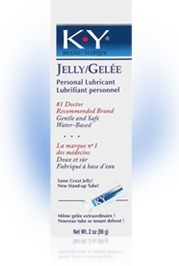 A single substance can have multiple uses if you put your eye to it, as Dr. Hemant K. Mehta demonstrates:
A single substance can have multiple uses if you put your eye to it, as Dr. Hemant K. Mehta demonstrates:
“A new use of K-Y jelly as a gonioscopy fluid,” Hemant K. Mehta, British Journal of Ophthalmology, vol. 68, no. 10 1984, pp. 765-767. (Thanks to investigator Dany Adams for bringing this to our attention.) The author, at Gwynedd District Hospital, Bangor, Wales, reports:
“Methylcellulose drops varying in strength between 0.3% and 2.0% and isotonic saline are the fluids currently used for gonioscopy and posterior segment examination of the eye with diagnostic contact lenses. The author reports the use of K-Y jelly for such examinations in over 80 patients after having it used on his own eyes without any immediate or delayed ill effects. No observable difference was found between saline drops, methylcellulose drops of 0.3% and 2.0%, and K-Y jelly as regards the visibility of the anterior and posterior segments of the eyes. The more viscous fluids of 2% methylcellulose and K-Y jelly were more convenient to use, as they rarely allowed interposition of air bubbles between the cornea and the contact lens. K-Y jelly was well tolerated by all subjects.”

February 3, 2014
The bonsai management model
“The necessity of performing managerial activities is perceived and apprehended not only in agricultural enterprises, food processing units, industrial works etc. but also in hospitals, schools, museums, theatres, design studios and many other organisations. The need of managerial activities is as old as the organised human society itself. Management is necessary for all groups of people who strive to reach a common goal.”
“Managers need to develop a new understanding of the management process that will respond to global trends in the world’s economy.”
How can this be done? And, how can management be understood? prof. Ing. Pavel Tomšík, Csc. of the Mendel University of Agriculture and Forestry, Brno, Czech Republic, presents a model in the journal Agricultural Economics – Czech, 53, 2007 (7): 291–297 entitled : ‘The bonsai management’
“Management can be understood as a ‘bonsai’ integrating its roots in long-term bases with the trunk of general management growing from it supporting a cultivated treetop branching out in the real time.”
The paper may be read in full here:
May we also recommend: ‘The Bonsai Identifier’
Also don’t miss: MidAtlantic Bonsai Societies 2014 Spring Festival
And, bonsai-related, see: Chihuahuas – are they, in fact, bonsai wolves?
BONUS: Son of a beech?

February 2, 2014
Son of a Beech?
Sexual reproduction of beeches is the subject of surprisingly few studies. Here is one of the few:
“Natural interspecific hybridization between sexual and apogamous species of the beech fern genus Phegopteris Fée,” Gerald A. Mulligan, Lionel Cinq-Mars, William J. Cody, Canadian Journal of Botany, 1972, 50(6): 1295-1300.
BONUS: Phegoperis Fée

February 1, 2014
Describing the levels of this and that of an earthquake
The Mercalli Intensity Scale describes, graphically, various levels of damage that result from earthquakes of various intensities. (The intensity of an earthquake is a different thing — and may or may not be intimately connected to the level of damage from the quake.) A simulator at Northern Illinois University puts this into visually graphic form:
(Thanks to investigator Rory Wentworth for bringing this to our attention.)
BONUS (quasi-related): A Wikipedia insider self-parody: ”The Terminal Event Management Policy (TEMP) is an official policy of Wikipedia detailing the procedures to be followed to safeguard the content of the encyclopedia in the event of a non-localized event that would render the continuation of Wikipedia in its current form untenable. The policy is designed to facilitate the preservation of the encyclopedia by a transition to non-electronic media in an orderly, time-sensitive manner or, if events dictate otherwise, the preservation of the encyclopedia by other means.…“. (Thanks to investigator Vaughn Tan for bringing this to our attention.)

January 31, 2014
Vibrostimulating the Latvian bobsleighers can produce victory (study)
 With the Winter Olympics about to begin, what better time to ask, ‘Do Latvian bobsleighers have a unique advantage? Specifically, the RE21 from the Latvian Academy of Sport Education? [photo at right]
With the Winter Olympics about to begin, what better time to ask, ‘Do Latvian bobsleighers have a unique advantage? Specifically, the RE21 from the Latvian Academy of Sport Education? [photo at right]
Details were revealed in a 2011 paper for the LASE JOURNAL OF SPORT SCIENCE 2011/2/1 | 3 by Uģis Ciematnieks, Nauris Ķeizans, Sandis Prūsis and Leonīds Čupriks, entitled: ‘VIBROSTIMULATION IN BOBSLEIGH’
“We in Latvian Academy of Sport Education have equipment of local vibrostimulation, that is portable and can therefore be better included in the training process of various kinds of sports.”
Vibrostimulating the athletes with the RE21 paid off, say the investigators, at least in Olympic scenarios where a few-hundredths-of-a-second advantage might be crucial.
“Summarizing the study results, we can conclude that vibrostimulation has effect, the experimental group result in bobsleigh push from standing position increased by 0.04sec, while the control group by 0.07sec after applying local vibrostimulation.”
Also see: Curling brush research (studies of Olympian sports technology)
BONUS (unrelated): “Cardiovascular Responses to Vibrostimulation for Sperm Retrieval in Men With Spinal Cord Injury” [study]

January 30, 2014
Finger lengths as a key to desirability in romantic couples
Human nature can seem complicated, but maybe it’s simpler to look at the relative lengths of a person’s fingers. Here’s yet another study that demonstrates the power of this approach:
“Sociosexual Orientation and 2D:4D Ratios in Women: Relationship to Men’s Desirability Ratings as a Long-Term Pair Bond,” Tara L. DeLecce, John P. Polheber, Robert L. Matchock [pictured here], Archives of Sexual Behavior, February 2014, Volume 43, Issue 2, pp. 319-327. The authors, at Wayne State University, Detroit, Michigan and Pennsylvania State University, Altoona campus, explain:
The current study examined whether men’s ratings of women’s desirability as a long-term pairbond, based on static photographs, were related to the women’s second-to-fourth digit (2D:4D) ratio and their sexual attitudes and behavior. The 2D:4D ratio was measured in 164 women and facial photographs were taken of 55 of these women. All women completed the Sociosexual Orientation Inventory (SOI). Male participants (n = 89), masked to this information, rated the 55 female participants on their desirability as a long-term sexual partner, specifically along dimensions of faithfulness, youthfulness, and attractiveness. Ten independent judges rated women’s photographed faces on masculinity. Results indicated a significant negative relationship between women’s SOI scores and men’s faithfulness ratings (more unrestricted sociosexuality was associated with lower faithfulness ratings). There was also a significant positive relationship between right (but not left) 2D:4D ratio and faithfulness ratings (women with female-like ratios were rated as being more faithful).

The high-carb milky lifestyle of Inuit infants (1878)
The Jardin d’Acclimatation in Paris’s Bois du Boulogne, now a children’s amusement park, was founded in 1860 as one of Europe’s first major zoos. In 1877 the directors followed the lead of Carl Hagenbeck and started incorporating ethnological exhibits, of humans indigenous to the strange lands being opened up by imperialism. These attracted huge crowds as well as interested anthropologists like milk expert Dr. C. A. Condereau (quoted in Scientific American in 1883).
The London Medical Times and Gazette (January 19, 1878) summarized Condereau’s findings in a paragraph that was syndicated in other journals and even translated into German.
Among the Esquimaux who are at present in the Paris Jardin d’Acclimatation is a young mother who is suckling two infants. Dr. Coudereau undertook the analysis of her milk in order to compare it with that of Europeans. He found that while it contains a smaller proportion of salts, it is richer in sugar and especially in fat. This richness in the hydrocarbons accords with the habitual regimen of the Esquimaux, who resist cold by the consumption of an enormous amount of fatty bodies. –Union Méd., January 12.
To find the original study, one has to first realize that “Coudereau” is a misspelling of “Condereau”, and then realize that the citation of L’Union Médicale only refers to another brief synopsis. The real data is in Bulletins et mémoires de la Société d’anthropologie de Paris (Vol. 12, pp. 637-639), in a paper presented December 20, 1877.
Here’s a table comparing the dry constituents of the milk of “la femme groënlandaise” and “des femmes françaises”.
Follow Amboceptor on Twitter: @AmboceptorBlog

Marc Abrahams's Blog
- Marc Abrahams's profile
- 14 followers


